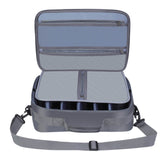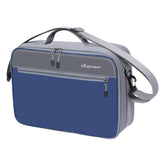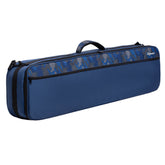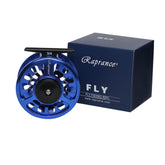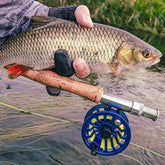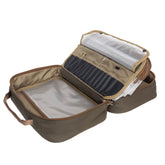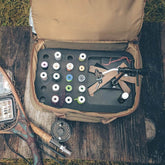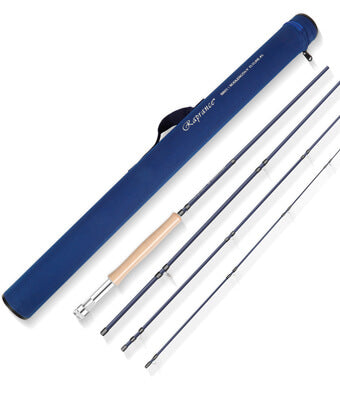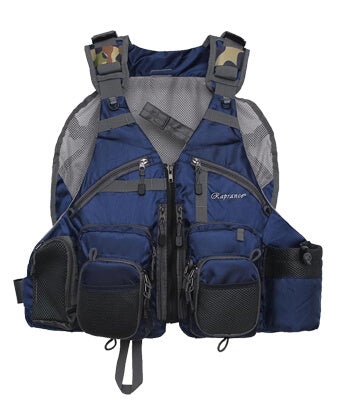Fly Line: Choosing the Best Options for Spey Casting
When it comes to Spey casting, selecting the right fly line to match your rod is crucial to enhance performance and ensure a smooth casting experience. Choosing the correct fly line not only aligns with the specifications of your Spey rod but also maximizes your casting efficiency on the water. I have spent considerable time testing various combinations and can share insights on what works best for traditional Spey setups.

For those on a budget, I’ve discovered some excellent traditional Spey fly lines that deliver solid performance without breaking the bank. These lines balance well with two-hand rods and facilitate effective roll casts, making them perfect for both beginners and seasoned anglers alike. My reviews of top-rated Spey lines reveal options that consistently meet expectations in versatility and ease of use, ensuring that you can enjoy Spey casting to its fullest.
In the pursuit of the best gear, I’ll cover essential aspects of traditional Spey line reviews, including taper designs and performance characteristics. Whether you’re looking for precision in your casts or the ability to handle varying water conditions, the insights shared here will guide you in making informed choices. Embrace the art of Spey casting with confidence, knowing that the right fly line plays a pivotal role in your success.
Selecting the Right Fly Line for Your Spey Rod
Choosing the right fly line for my Spey rod involves understanding various factors like line weight, head length, and matching lines to specific casting styles. These considerations ensure effective casting and optimal presentation of the fly.
Understanding Line Weight and Head Length
Line weight, measured in grains, is crucial for effective Spey casting. AFTMA standards classify lines based on weight, typically ranging from 4 to 12 grains for Spey lines. Selecting a line that matches my rod's designated weight ensures proper loading and casting efficiency.
The head length also plays a significant role. Shorter heads are designed for quicker casts and less complicated spaces, like during single Spey casts. In contrast, longer heads provide better control for sustained delivery, especially in open spaces when using techniques like the double spey.
Matching Spey Lines to Rod Lengths and Casting Styles
Rod length directly affects line selection. Spey rods typically range from 12 to 16 feet, and each length requires a specific line strategy. For rods around 12 to 13 feet, I prefer shorter lines or lighter head weights, which facilitate easier maneuverability and quick casts.
When my casting style leans toward traditional presentations, a longer head can enhance stability. Conversely, for dynamic casting styles like Skagit, shorter heads complement rapid, aggressive strokes. Understanding my casting style helps determine the most suitable fly line for successful fishing experiences.
The Role of Skagit and Scandi Lines in Spey Casting
Skagit lines are designed for heavy tips and larger flies, providing excellent performance in challenging conditions. I find them ideal for reaching deeper water or working in fast currents because they load the rod effectively at short distances.
Scandi lines excel in lighter setups and present smaller flies delicately. Their longer head length allows for graceful line control and presentation, perfect for more subtle fishing scenarios. Choosing between Skagit and Scandi involves assessing the conditions and types of flies I plan to use, ensuring optimum performance each time I cast.
Cost-Effective Solutions for Traditional Spey Lines

When looking for traditional Spey lines that balance cost with performance, it’s essential to explore the available options carefully. I focus on finding value in budget lines and provide insights into the best-reviewed affordable choices.
Finding Value in Budget Spey Lines
I often find that budget-friendly Spey lines can offer excellent performance without breaking the bank. Many fly shops carry options that meet a range of casting styles and conditions, making them accessible for anglers at any skill level.
Some brands I recommend include:
- Scientific Anglers: Known for quality construction at a reasonable price.
- Rio: Offers a wide variety of affordable Spey lines, including options designed for single-hand Spey casting.
When selecting a budget line, consider the taper design, as this impacts casting efficiency. A double taper (DT) line can be especially useful for traditional techniques, allowing for smooth roll casts and delicate presentations.
Reviews and Recommendations for Affordable Spey Lines
In my search for budget-friendly Spey lines, I’ve come across various models that consistently receive positive reviews.
- Rio Skagit Max: This line excels in heavy-duty applications and is suitable for a variety of conditions.
- Scientific Anglers Spey Lite: A lighter option ideal for smaller rivers, this line helps manage delicate presentations.
- Airflo Switch: Offers versatility for both Spey and single-hand casting, making it a popular choice among budget-conscious anglers.
These lines not only provide an economical alternative but also feature durable construction. It's important to read user reviews and compare specifications to ensure the line matches my needs and casting style effectively.
Advanced Spey Casting Techniques

In pursuing advanced Spey casting techniques, I focus on mastering challenging casts and effective presentation strategies. These skills are vital for targeting species like steelhead and salmon with precision and finesse.
Mastering Difficult Casts with a Spey Rod
To master difficult casts, I concentrate on techniques such as the snake roll and roll casting. The snake roll is particularly useful for changing direction while maintaining line control. It allows for a longer, smoother loading of the rod, resulting in an efficient D-loop formation.
When practicing, I ensure my body position aligns properly to facilitate the casting motion. Utilizing a two-hand rod can further enhance my casting abilities, providing better leverage. Regular practice of these complex casts contributes to improved accuracy and distance.
Presentation Strategies for Steelhead and Salmon
Effective presentation is crucial when targeting steelhead and salmon. I often use wet flies in varying depths, adjusting the retrieve speed based on water conditions. This adaptation increases the likelihood of attracting fish.
In presenting my line, I consider the drift angle to ensure it mimics natural movement. I utilize a single hand Spey technique when space constraints are present, which allows for precise casts with reduced false casting. The placement of my cast should create a natural swing across the current, maximizing the chances of a successful strike.

